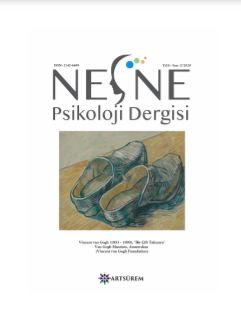Çocuk ve Ergenlerde Televizyon İzleme Sıklığı ve Toplumsal Cinsiyet Kalıpyargıları: Ekme Kuramı Bağlamında Bir Derleme Çalışması
Frequency of Television Watching and Gender Stereotypes in Children and Adolescents: A Review in the Context of Cultivation Theory
Author(s): Turan Gündüz, Ayşe Nur Akyüz, Ayda Büyükşahin SunalSubject(s): Gender Studies, Psychology, Media studies, Social psychology and group interaction, Developmental Psychology, Social Norms / Social Control
Published by: Sanat ve Dil Araştırmaları Enstitüsü
Keywords: cultivation theory; gender roles; watching tv; children; adolescents;
Summary/Abstract: Widespread use of television has brought with it the examination of the effect of exposure to TV content on its viewers. One of the most remarkable approaches put forward in this context is the Cultivation Theory developed by Gerbner (1969). The theory, which focuses on the impact of TV viewing on individuals perceptions of reality, assumes that as the frequency of exposure to messages presented in TV increases, individuals’ perceptions of the real world are shaped according to these messages. The development of gender stereotypes and beliefs in gender equality in children and adolescents may also be fed by the “cultivation” function of TV, which is widely used by them also. The aim of this study is to systematically review the studies focuses on the relationship between frequency of watching TV and children’s or adolescents’ gender-based stereotypes in the context of Cultivation Theory. A total of 23 studies conducted between 1960 and 2020 were reviewed in this context and it was determined that both children and adolescents had more traditional beliefs and attitudes about gender roles with the increase in the frequency of watching TV. Findings were discussed in the light of the relevant literature.
Journal: Nesne-Psikoloji Dergisi
- Issue Year: 8/2020
- Issue No: 17
- Page Range: 333-358
- Page Count: 26
- Language: Turkish

